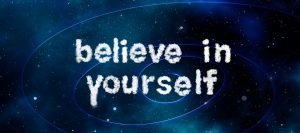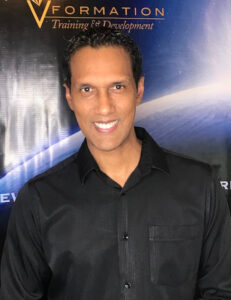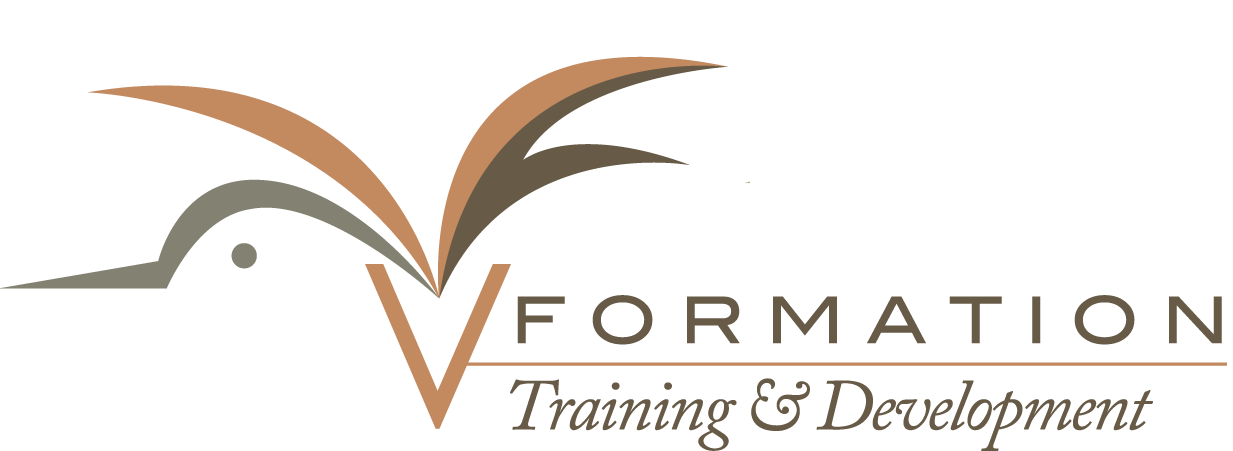
Blog
The Presentation Skills 6-Pack!! – Skills For The In-Person and Online Presenter
Over the years, I have altered many aspects of the way I “show up” as a trainer or speaker. Whether it was my tone of voice, eye contact, or body language, every little change made a difference. While it is true that, as a speaker, you can’t satisfy everyone all of the time, the goal, whether online or in-person, should be to influence everyone in the audience.
What I know for sure is this – the goals that we should have when we present to any audience are these:
- Make them want to hear what you have to say!
- Help them to understand your message, satisfy a need, and/or take action if necessary!
- Make them glad that they showed up! (because some of them didn’t have a choice)
Whether you are online or in-person, here are 6 presentation skills “muscles” we need to strengthen to make these possible:
1. YOUR INTRODUCTION
Did you ever watch a movie trailer on YouTube and still want your money back? Or see one that tells the whole story? I know I did. Movie trailers should grab your attention and give you only a “taste” of what is to come. An introduction to a presentation is no different. This is what your audience will hear first so it is a good idea to keep them wanting more. Here are a few things that could accomplish this:
- A clear objective – This is an absolute must. It is the “trailer”. All of the other points below are things that you can add to your intro (either before or after the objective). A great objective may sound like this: “My aim today is to analyze the 3 crucial concepts that will change the way you lead others so that they could be centered, inspired, and focused.” It is clear what you want to take away.
- Stories – People love hearing stories. Stories have a unique ability to build connections as it boosts our feelings of trust and empathy for the storyteller. Neuroscientists have found that when listening to a story (if it is told well), the same areas of the brain light up on an MRI in both the storyteller and listener. As a result, your brain reacts as if you are experiencing it yourself.
- Tell your audience to imagine something – Like stories, this is another one of the best ways to get people on a journey with you. But, like stories, it must be related to what your message will be. For example: “Imagine being upset with someone close to you but never having the courage to say what you really want to say.”
- Open-ended question – How has Covid changed the way you live your life? Questions take the focus off of you and into the minds of the audience. They will look forward to what you have coming up.
- Bold statement – This will provide an element of surprise, will signal your confidence, and will get the audience to pay attention immediately.
- Quote – This is sometimes useful but also one of the riskiest openings you can use. It’s risky because, with the information age, many people may have heard the quote before. You don’t want something your audience will know. Instead, you want something that will surprise them. Be original. One of my pet peeves with quotes is that many of them are not true all of the time: “What doesn’t kill you makes you stronger…..” Really?? and “Nice guys finish last”…well it depends.
2. YOUR USE OF WORDS
What is it about words that grab our attention? During my daily scroll through the Yahoo home page, an item “jumps out” and makes me want to read more. It is not that I am interested in who they are talking about but rather, the way they worded the headline. Words can draw people in.
My greatest challenge and where I continue to make most of the changes today lies in my use of words. But why focus on words when many researchers have stated that “Words are only responsible for about 7% of your message, body language and tone of voice make up the other 93% ?” I will admit – I am guilty of saying it myself over the years. Nevertheless, I have come to realize that this is possibly a myth!! or at least the percentage is!! I say this not only because of my own experience and research but because I have heard many monotone and “static” speakers who captured my attention as well as the attention of many others. What they did use? Powerful words and ideas to convey valuable information. We don’t all have to be Tony Robbins. I certainly don’t want to send the message that tone of voice and body language shouldn’t be considered. I prefer to think that they are all important even if you are standing behind a podium.

Here is an example of powerful words in action:
While Britain was under attack from Germany, somehow, Winston Churchill had to find a way to inspire his countrymen to greatness. This is an excerpt from Winston Churchill’s first speech on 13 May 1940 to the House of Commons after having been offered the King’s commission to become Prime Minister of the United Kingdom in the first year of World War II.
Observe his use of power words (in bold):
“I would say to the House as I said to those who have joined this government: I have nothing to offer but blood, toil, tears, and sweat. We have before us an ordeal of the most grievous kind. We have before us many, many long months of struggle and suffering. You ask, what is our policy? I can say: It is to wage war, by sea, land, and air, with all our might and with all the strength that God can give us; to wage war against a monstrous tyranny, never surpassed in the dark, lamentable catalog of human crime. That is our policy. You ask, what is our aim? I can answer in one word: It is victory, victory at all costs, victory in spite of all terror, victory, however long and hard the road may be; for without victory, there is no survival.”
Churchill had not been the preferred choice of the people and he was regularly heckled but during this speech, people were now listening and cheering.
So is it a good idea to use power words? It’s not just a good idea, it’s a DAMN good idea!!
Let’s look, for example, at how we can write a captivating objective (where applicable). The first thing to consider here is the use of “action” verbs. Objectives become measurable when you have stated exactly how the information will be proven useful. Examples of these verbs include: “Define”, “Identify”, “Discover”, “Demonstrate”, or “Analyze”.
Avoid verbs like “Understand”, “Know”, and “Be aware of” as these can be difficult to quantify. Would you rather take a course that is going to help you to “understand” or “to be aware of” a particular skill? Or would you rather pay for a course that will teach you how to “demonstrate” that skill?
Here are two examples of objectives:
“Become aware of the negative behaviors of employees and understand how to inspire them.”
“Discover the sources of inspiration for your employees and change their negative behaviors.”
The second objective is more powerful and shows exactly what you will actually be able to do.
Please don’t confuse the use of powerful words with sounding sophisticated. Beware of all the fad business jargon: paradigm, potentialize, core competency, etc. If your talk is full of them, you will sound like you are “full of it” (but no one will tell you). Don’t try to sound like an angry politician unless you are one.
“Humanize” the experience as much as possible. It helps you to be clearer and to appear that you want to connect with the audience. Colleagues, direct reports, customers, or participants in a presentation should not have to struggle to translate every sentence you say to them. You might as well be speaking “gibberish”. Any speaker who won’t take the time to be clear and personable will lose the audience, customers, and opportunity. Let me put it another way for the business executives: a shortfall will be experienced in your ability to maximize organizational capability and profitability.
3. YOUR USE OF NUMBERS
Which headline in each example would convince you to spend time reading it?
Money-Saving Secrets Every Professional Should Know
or
3 Money-Saving Secrets Every Professional Should Know
Surprising Reasons Why Customers Remain Loyal To Your Business
or
5 Surprising Reasons For Why Customers Remain Loyal To Your Business
Can We Really Trust Tap Water? Things You Should Know
or
Can We Really Trust Tap Water? 3 Things You Should Know
Also, when numbers are used as part of the title of books and articles or the subject line in emails, writers will get your attention because numbers instill a sense of scarcity, one of Roberto Cialdini’s “Principles of Influence” which asserts that people will try to seize those opportunities that are rare or scarce.
Numbers, when used in the body of a presentation, will also attract attentio n but they must make sense. For example, A presenter in my class once spoke on “Drinking and Driving” and stated that we must aim to keep our blood alcohol level at 35 microgrammes of alcohol per 100 milligrams of breath. How many of us know what that means? This means nothing if the audience is the general public. Is that equivalent to 3 beers, 2 glasses of wine??? That is the information we need. They can also show up as evidence to support a point. I shouldn’t simply say that “cars are more expensive this year”, I should say; “car prices have increased 20% over last year”. It will help the audience to relate to what you have to say. Humanize the experience for the audience!!
n but they must make sense. For example, A presenter in my class once spoke on “Drinking and Driving” and stated that we must aim to keep our blood alcohol level at 35 microgrammes of alcohol per 100 milligrams of breath. How many of us know what that means? This means nothing if the audience is the general public. Is that equivalent to 3 beers, 2 glasses of wine??? That is the information we need. They can also show up as evidence to support a point. I shouldn’t simply say that “cars are more expensive this year”, I should say; “car prices have increased 20% over last year”. It will help the audience to relate to what you have to say. Humanize the experience for the audience!!
Now that you have some critical aspects of your content all set up, delivering a clear and confident message to the audience also requires….
4. EYE CONTACT
Your eyes are for engaging with the audience. You don’t have to stare at people as if they just grabbed a french fry from your plate, but ensure that you choose people in the audience to connect with. The reactions of individuals in the audience will reassure you. You will also be able to assess how you are doing.

In small live audiences of 20 or less, you should be able to connect with everyone through eye contact. If your audience is very large, however, choose about 6-7 people in different locations to focus on during the presentation. Remember that even though you are focusing on someone, the people close to them may connect with you as well since they may think you are looking at them. Finish a point while making eye contact with someone and move to someone else to finish your second point. If you try to focus on the entire audience, they will appear blurry.
For an online audience, this is simpler as all you have to do is focus on the camera. When you do this, everyone thinks you are looking at them. One added tip is to make sure your camera is eye level or slightly higher. Make sure you are not looking down on your audience.
5. TONE OF VOICE

Whether you are online or live, there are three main factors to keep in mind here:
- Use expression in your tone of voice so that you could emphasize certain points giving true meaning to what you are trying to say.
- Inject pauses after powerful statements to control your speed and to allow the audience to think.
- Breathe. It helps you to relax and reduces filler language such as “um”,”er”, “right” and “ok”….ok?
This supports the use of your……
6. BODY LANGUAGE
Even when you are doing online presentations, body language is still critical because the audience can still see you. Some key elements to remember here are:
- Sit upright
- Gesture in a way that conveys energy
- Avoid gestures that push your hands towards the camera as they will look extra-large on the screen
- Be aware of your “listening face” – people will know if you are paying attention to them
- Remember to smile
Regardless of how important your information is, your audience will recognize if you believe in your material. Your body language will show how relaxed and confident you are.
For in-person presentations, stand evenly on two feet with a strong but relaxed posture. Avoid rocking back and forth (something I have seen often when speakers try to put all their weight on one foot).
Touch-Turn-Talk is a simple yet effective technique I learned years ago and still use today for in-person presentations. The “Touch” is the 1.5 seconds you look at your screen. This screen can be your computer, the screen at the front or one at the back of the room. Wherever it is, make it quick!!! The “Turn” to the audience should also be quick but this only matters if the screen you are using is the one the audience is looking at (i.e. the one behind you). The “Talk” is where the “magic of influence” lies. This is where you are facing and addressing the audience. We all know how annoying it could be to see a presenter read off the screen for extended periods of time. The audience could read, we don’t need the presenter to do it!!! One more thing; walk around your audience or use movement when you want control and more involvement with the group.
This 6 pack will allow you to …CREATE A CLEAR STORY!!! I am not speaking about a story you share at the beginning. I am referring to the entire presentation. This will help words to flow more smoothly, the expression in your voice to be self-assured, your eye contact with the audience to be longer and your body language to be confident.
Always rememb er that audience members are all different. They process information differently. We all have the ability to process information using visual (what you see), auditory (what you hear), and kinesthetic means (what you feel), however, how much we use these will differ from person to person. Therefore, if your content and body language align, the level of influence you have with your audience will supersede your expectations.
er that audience members are all different. They process information differently. We all have the ability to process information using visual (what you see), auditory (what you hear), and kinesthetic means (what you feel), however, how much we use these will differ from person to person. Therefore, if your content and body language align, the level of influence you have with your audience will supersede your expectations.
If you enjoyed this blog, please share this link with your family, friends, or colleagues:
http://www.v-formation.net/the-presentation-skills-6-pack/
And if you are interested in doing a full Presentation skills program that will help with both in-person-person and virtual presentations, you can explore this option:
Tony  Ragoonanan is the Founder of V-Formation Training & Development. As a Trainer and Performance Management Specialist, he helps individuals, teams, and businesses to align behaviours and goals, create the right organizational culture and maximize capability. Outside of this, it’s all about family, football, and fitness!!
Ragoonanan is the Founder of V-Formation Training & Development. As a Trainer and Performance Management Specialist, he helps individuals, teams, and businesses to align behaviours and goals, create the right organizational culture and maximize capability. Outside of this, it’s all about family, football, and fitness!!
868-681-3492 | tonyr0909@gmail.com




8 Comments
Linette Rampersad
Tony thank you for your inspiring and thoughtful Emails as always. Its a pleasure reading them. Thanks again.
Tony Ragoonanan
You are very welcome as always Linette
Anonymous
Interesting, this is an activity I have successfully dodge for most of my working life..I Always tried to individualized contacts with my direct reports. Thought provoking.
Appreciate the information on the subtlety of the art.
Tony Ragoonanan
Thanks for your feedback and sorry for the late reply. It seems that all the comments were going directly to trash. I am working on the issue
Nigel Bradshaw
Tony, thanks a lot for this – it allows me to quiz myself; am I choosing the right words? Do I present myself as a brand that my employers understand to be synonymous with theirs? Is my body language and wording synchronous? Am I quantifying myself? Are my audiences enthralled?
God bless you and de family dis Season!
BRADEE!!!
Sherry Toolsie
Thank you for your excellent tips Tony. I can’t wait for your next article!!!!!
Sherry Toolsie
Thank you for your excellent tips Tony. I can’t wait for your next article!!!!!!
Tony Ragoonanan
Thanks Sherry…hope all is well